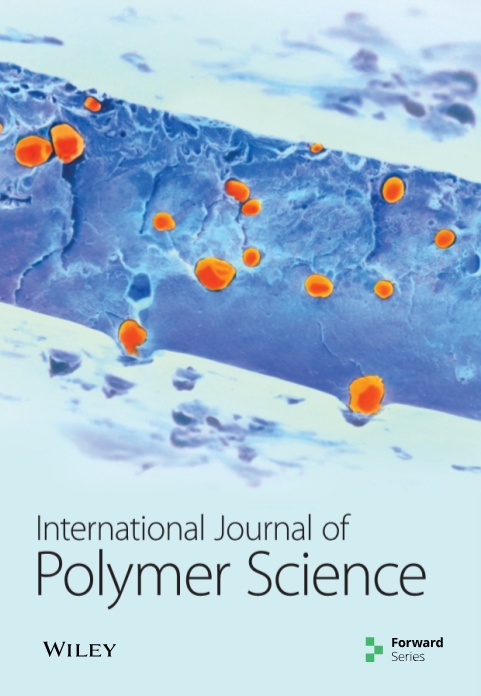Characterisation of Luffa cylindrica Fibre from Cameroon for Use in Composites: Effect of Alkaline Treatment
IF 4.4
4区 化学
Q2 POLYMER SCIENCE
引用次数: 0
Abstract
The study of Luffa cylindrica is seen as an alternative solution for the development of green materials. However, a lack of knowledge about some of their characteristics can slow down these applications. The present study focuses on the characterisation of the fibre derived from the Luffa cylindrica sponge. In this study, the fibre was extracted using a manual technique, followed by a treatment cycle with 5%, 7.5%, and 10% NaOH at a temperature of 28°C for 60 min. The results obtained show the lightness of the fibre through its low density (0.233-0.419 g·cm-3), and a hydrophilic nature of the fibre is observed through its water absorption capacity (106.86-180.53%), its relative humidity (9.86-15.33%), and its capacity to diffuse water ( m2·s-1 to m2·s-1), which is close to that of other plant fibres, which means that it can be classified as porous, with possible applications in insulating and lightweight materials. Its diameter (418.61-554.42 μm) and linear mass (34-58 g·km-1) are high, in contrast to other fibres used in the textile industry to produce yarns. The mechanical results, namely, stress at break (9.744-27.45 MPa), Young’s modulus (307.56-582.41 MPa), and elongation at break (3.45%-8.11%), are close to those of other plant fibres used as reinforcement in polymer matrix composites for applications in the automotive, insulation, furniture, and construction industries. Luffa cylindrica fibre could have applications in the same direction. Fibres treated with 5% NaOH effectively improve the properties of raw fibres.喀麦隆用于复合材料的圆柱丝瓜纤维的特性:碱性处理的效果
对圆筒形丝瓜的研究被视为开发绿色材料的另一种解决方案。然而,对其某些特性的缺乏了解可能会延缓其应用。本研究的重点是分析从圆柱丝瓜海绵中提取的纤维的特性。在这项研究中,采用手工技术提取纤维,然后在 28°C 的温度下用 5%、7.5% 和 10%的 NaOH 进行 60 分钟的循环处理。研究结果表明,这种纤维密度低(0.233-0.419 g-cm-3),重量轻;吸水能力(106.86-180.53%)、相对湿度(9.86-15.33%)和水扩散能力(m2-s-1 至 m2-s-1)与其他植物纤维接近,因此具有亲水性,可用于绝缘和轻质材料。它的直径(418.61-554.42 μm)和线性质量(34-58 g-km-1)都很高,与纺织工业中用于生产纱线的其他纤维形成鲜明对比。其力学结果,即断裂应力(9.744-27.45 兆帕)、杨氏模量(307.56-582.41 兆帕)和断裂伸长率(3.45%-8.11%),与用作聚合物基复合材料增强材料的其他植物纤维接近,可应用于汽车、绝缘、家具和建筑行业。圆筒形丝瓜纤维也有同样的应用前景。用 5%NaOH 处理的纤维可有效改善原纤维的性能。
本文章由计算机程序翻译,如有差异,请以英文原文为准。
求助全文
约1分钟内获得全文
求助全文
来源期刊

International Journal of Polymer Science
POLYMER SCIENCE-
CiteScore
6.10
自引率
0.00%
发文量
55
审稿时长
>12 weeks
期刊介绍:
The International Journal of Polymer Science is a peer-reviewed, Open Access journal that publishes original research articles as well as review articles on the chemistry and physics of macromolecules.
 求助内容:
求助内容: 应助结果提醒方式:
应助结果提醒方式:


